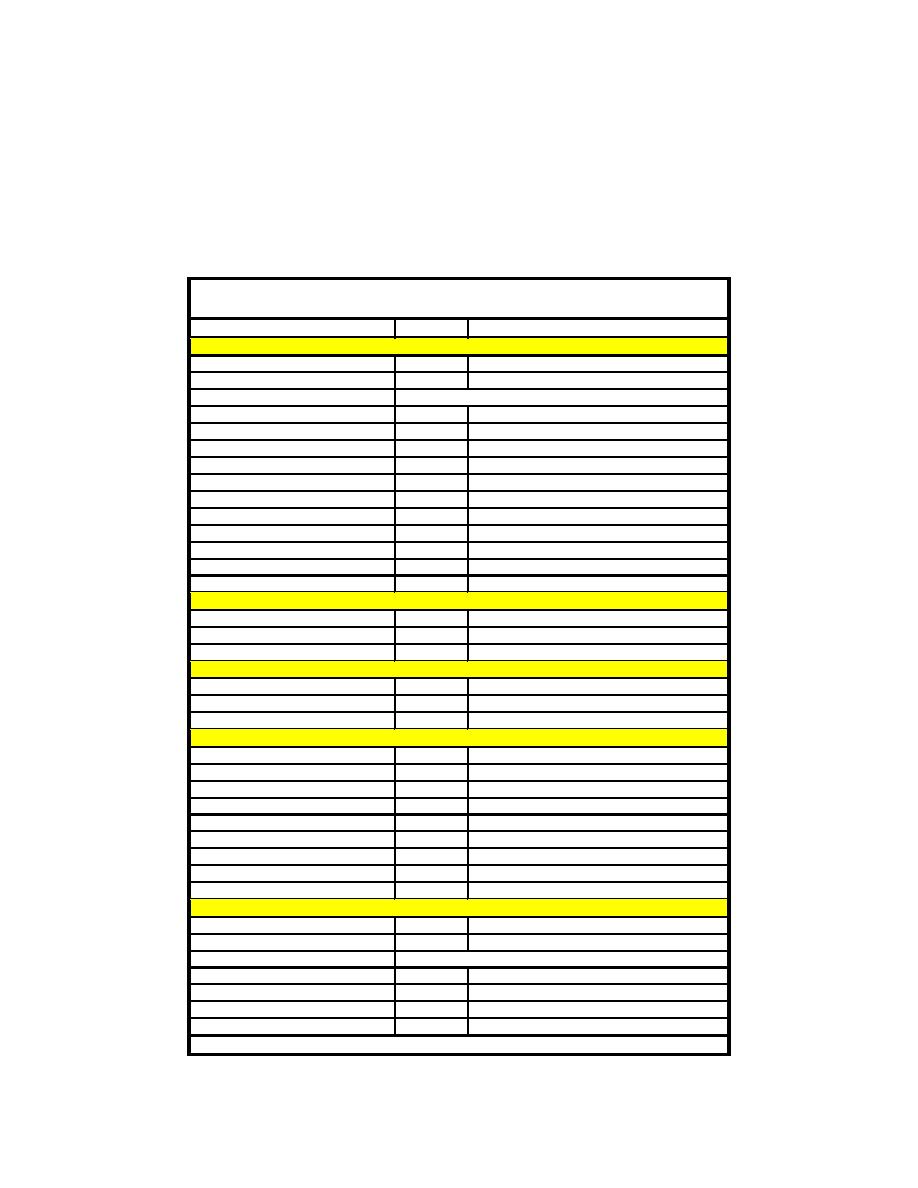 |
||
|
|
||
|
Page Title:
7.1.7 OSHA Air Quality Standards |
||
| |||||||||||||||
|
|
 7.1.7 OSHA Air Quality Standards
When volatile emissions are determined by a Tier I evaluation to be of
concern, Tier II screen and Tier III evaluations are performed, and predicted
emission concentrations are compared to OSHA standards to determine
compliance. Table 7-2 provides the current OSHA standards (29 CFR) for air
Table 7-2
OSHA Regulations (Standards 29 CFR) Limits for Air Contaminants
TWA, ppma
mg/m3b
Compound
Metals
Aluminum
15 dust, 5 respirable
Antimony
0.50
See 29 CFR 1990.103c
Beryllium
0.002, 0.005, 0.025 (30-minute maximum peak)
Cadmium
0.005
Chromium (hexavalent)
0.50
Copper
0.10 fume, 1.0 dust mist
Lead
0.05
Mercury
2.0
Nickel (soluble)
1.0
Phosphorus
0.10
Selenium
0.20
Silver (soluble)
0.01
Thallium (soluble)
0.10
Polyaromatic Hydrocarbons (PAHs)
0.20 (as coal tar pitch volatiles)d
Benzo(a)Pyrene
Chrysene
0.20 (as coal tar pitch volatiles)
Naphthalene
10
50
Organophosphorus Pesticides
Azinphos Methyl
0.20
Demeton, Total
0.10
Malathion (total dust)
15.0
Chlorinated Pesticides
DDT
1.00
Aldrin
0.25
Chlordane
0.50
Dieldrin
0.25
Endrin
0.10
Lindane
0.50
Heptachlor
0.50
Methoxychlor (total dust)
15.0
Toxaphene
0.50
Semivolatile Organic Compounds
1,3-Dichlorobenzene
50
300
1,4-Dichlorobenzene
75
450
See 29 CFR 1910.1003-1016e
3,3'-Dichlorobenzidine
Di-N-Butly Phthalate
5.0
Di-N-Octyl Phthalate
5.0
Hexachloroethane
1.0
10.0
Isophorone
25
140
(Continued)
7-7
Chapter 7
Guidance for Evaluation of Volatile Emissions
|
|
Privacy Statement - Press Release - Copyright Information. - Contact Us - Support Integrated Publishing |